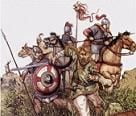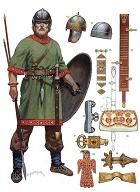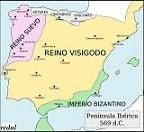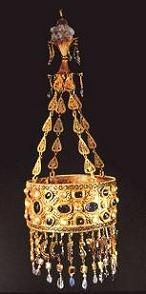According to St. Gregorio de Tours, existed between Sagunto and Cartagena, in Visigothic time (last quarter century) a monastery called St. Martin. This author, who lived during the sixth century and was therefore contemporary with the events, narrates an episode that occurred in this place when a group of soldiers in the army of King Leovigildo attacked the monastery. The monks had fled to a nearby island, leaving only an old abbot, who attributed miraculous events.
From this source some authors have located this monastic foundation in Jávea, as it seems to indicate the survival of the top "Cap de Sant Martí", as well as the presence of the nearby island of Portitxol, place where following this hypothesis, the monks
I must say, however you do not have any archaeological proof of this assumption monastery.
The Monastery of San Martin
By: Roque Chabás, history city Denia (1.874)
"On the ancient convent of San Martin, let us hear Gregorio Turonense (1) from whom the news has been taken:
"He walked, he says, the king Leovigildo in pursuit of his son Hermenegildo and his army, as usual, attacked mercilessly in holy places. Was a monastery of San Martin between Sagunto and Cartagena Espartaria. Upon hearing the monks that this army was approaching the place, they flee leaving the abbot, who was old and hide in an island in the sea.
The arrival of the Goths, and the things of the monastery, which had been left unguarded, came upon the abbot, stooping under the weight of the years, but holiness being raised by pillaging.
Having drawn his sword one of the soldiers with the intention of cutting off his head, he fell to the ground, exhaling on the spot. Just they prepare themselves for this others fleeing terror struck.
All this having been brought to the notice of the king, he commanded with great truth to be restored to the monastery everything that had been taken from him.
Palau studied very carefully in his DianaDesenterrada, the issues arising from this text. and after a careful examination of the opinions of all the chroniclers of the kingdom, it comes to deduct, quite justifiably, solid criticism that the convent of San Martin was located in the place we now call San Antonio (in another time San Martin) and the site where the convent of San Gerónimo, today hermitage day of Our Lady of Los Angeles was later built.
The island that religious refuge, says the same, be what we now call Jabea Island, off Cape Martin; one hour far from the convent, and it stands alone as a stone's throw away from land. This island, which can be passed without danger with any barquichuelo, although small, plenty for religious could be hidden in it, mostly because it's in a cave quite capable.
Palau places the Leovigildo excursion in the year five hundred and eighty-five, and believes that these religious followed the rule of San Martín and not that of San Agustin, who want others, making mistakes, he says, this convent with which he founded San Donato in agro Scetabitano. "
(1) «In Hispaniis nuper factum cognovi, cum Leovigildus Rex contra flium suum ambularet, atgue exercitus ejus (ut assolet) graviter loca sancta concurreret: monasterium erat S. Martín inter Segundolum atque Chartaginem Spartariam. Audientes autem Monachiguad hic excercitus ad locum illum shouldret accede, fugam ineunt, et se relict Abbate sene, in insulam maris abscondunt. Advenientibusautem Gothis, ac diripientibus res monastery, quae sine custoderemanserant, Abbatem senio incurvatum, sed sanctitate erectum offendunt: extract que unus gladio, guasi amputaturus cervicem ejus, resupinus ruit, ac spiritum exhalavit: reliqui vero timger haec seers, seers. Ouod cum Regi nuntiatum fuisset, cumtestificatione praecepit omnía quae ablata fuerant monastery restored «Gregor, Turon, Deglor. Confess. chap. Xll, no. 13.
Source: "History of the City of Denia" Roque Chabas (1.874) Part 1ª Chapter VII (pages 111-113)













